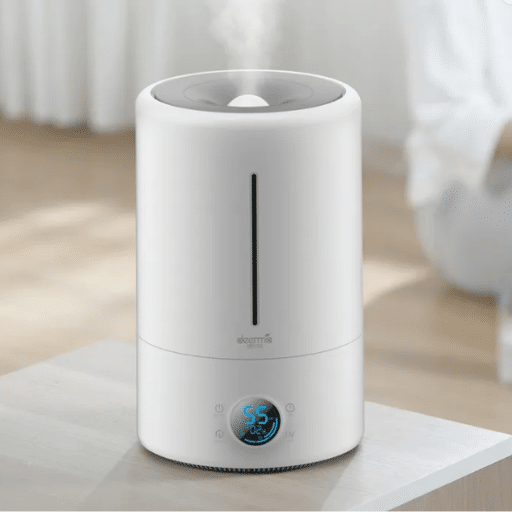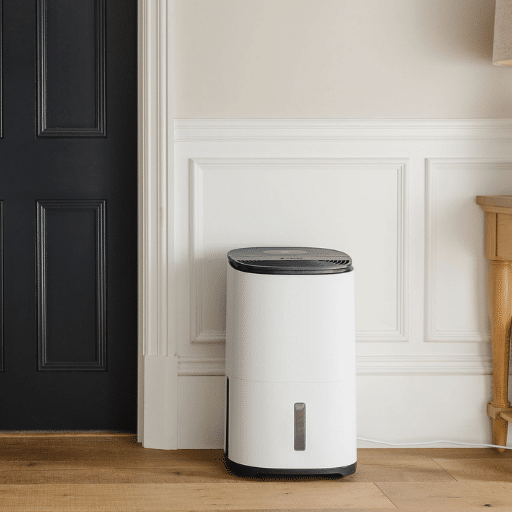Your comprehensive guide to whole-house humidity control for optimal air quality and comfort
Control of humidity is essential for a comfortable and healthy living atmosphere though most of the time it is not given the attention it deserves. A lot of moisture in the air may create several issues including mold infestation, bad smells, and physical health problems such as allergies or even asthma. A ducted dehumidifier comes at this point—a powerful remedy that is meant to control the humidity level in the entire house or the whole business area.
We will in this article discuss how ducted dehumidifiers function, their advantages, and most importantly the reason why they are the air quality maintainers and property protectors. If you seek to improve the level of comfort, protect your possessions or even enhance the health of the whole family, this tutorial will equip you with the necessary knowledge to arrive at an informed choice.
Understanding Ducted Dehumidifiers
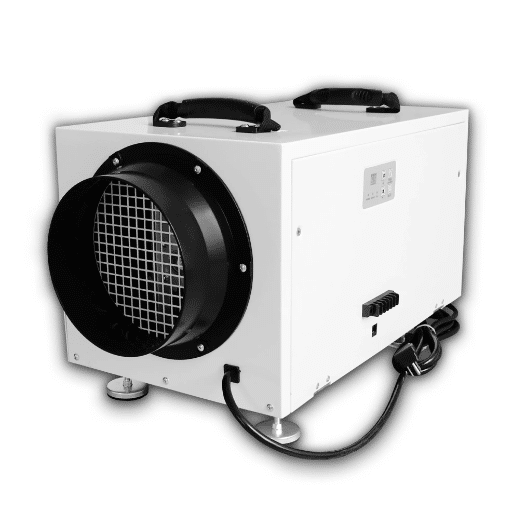
Ducted dehumidifiers operate by sucking in the moist air that is present in your house or office via a duct system. The air thus directed is introduced into the unit where it is subjected to cooling coils. The moisture in the air is then turned into droplets by these coils, and thus the air is rendered dry. The dehumidified air is subsequently warmed up and blown back into the area of living or working, thus maintaining the temperature and humidity to be the same as in other areas.
What is a Ducted Dehumidifier?
A ducted dehumidifier is a very large air extractor intended for such places as households, factories, or commercial buildings where humidity levels are to be controlled and air quality improved. Ducted dehumidifier is a permanent solution that takes its spot directly in the building’s HVAC system or ductwork, thus its ability to control humidity levels throughout the entire house.
Key Features:
- Permanent integration with HVAC system or ductwork
- Continuous moisture extraction and air circulation
- Digital controls and smart sensors for automatic adjustment
- Energy-efficient operation
- Prevents mold, mildew, decay, and discomfort
How Ducting Works in Whole Home Solutions
Ducting in whole home solutions is a method that efficiently channels air flow throughout your living area. The air that is conditioned, clean, and dry can be distributed evenly to every room in the house by connecting a centralized dehumidifier or HVAC system to a network of ducts.
✓ Benefits
- Consistent temperature and humidity levels
- Improved air quality throughout home
- Lower energy consumption
- Smart sensors track conditions in real-time
- Automatic airflow adjustment
⚡ Growing Popularity
Recent data indicates that ducted solutions are becoming more popular among homeowners due to their capability to improve air quality and at the same time lower energy consumption, making them both efficient and effective.
Benefits of Choosing a Ducted System
Ducted systems are the most innovative and capable among the various options available to homeowners. Here’s why they stand out:
| Benefit | Description |
|---|---|
| Overall Air Quality Improvement | Spreads clean, filter-cleaned air through the house, reducing allergens, dust, and dirty air |
| Smart Optimization | Real-time sensors optimize energy usage by adjusting flow automatically |
| Cost Savings | Maintains operations that eliminate wastage, reducing energy bills |
| Healthier Lifestyle | Creates cleaner indoor environment for improved respiratory health |
| Sustainability | Best choice for those prioritizing comfort and environmental responsibility |
Features of Aprilaire Dehumidifiers
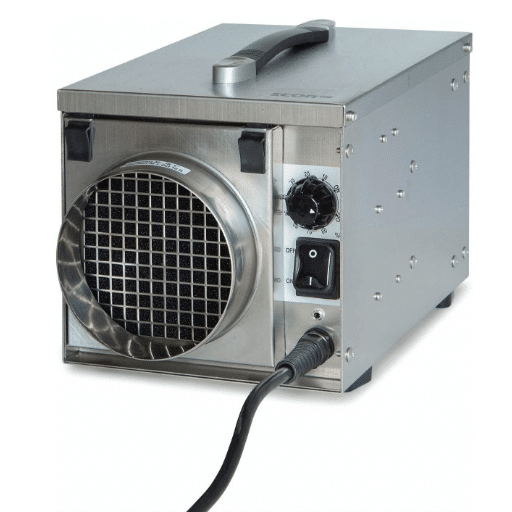
🌊 High Capacity Moisture Removal
Aprilaire dehumidifiers remove almost 95 pints of moisture every day, making them perfect for large areas or extreme humid places.
🎯 Automatic Humidity Control
Digital controls automatically detect and adjust to humidity levels, ensuring optimal air conditions without human intervention.
⚡ Energy Efficiency
ENERGY STAR® certified units perform excellently with very low energy consumption, leading to reduced utility bills.
🔧 Easy Maintenance
User-friendly design with washable filters that are easily accessible and simple controls for efficient cleaning and operation.
🔇 Quiet Operation
Very silent dehumidifiers provide comfort without interfering with the atmosphere of the house.
🔄 Versatile Integration Options
Can be connected to the HVAC system or used as separate units, providing flexibility for different needs.
💪 Durable Build
Made of the best quality materials and designed to last and work reliably for years to come.
Aprilaire Model Comparison
Aprilaire E100 Overview
🏆 Powerful Whole-House Solution
The Aprilaire E100 is a powerful dehumidifier for the whole house that is meant to breathe fresh air indoors. This model’s daily moisture removal capacity is up to 100 pints, making it suitable for houses with a maximum area of 5,500 square feet.
Key Specifications:
- 100 pints daily moisture removal capacity
- Covers homes up to 5,500 square feet
- ENERGY STAR® certification
- Durable corrosion-resistant aluminum coil
- Automatic humidity control with digital interface
- Washable and reusable filters
- Silent operation for minimal disruption
Comparing Aprilaire E070 and E080 Models
| Feature | Aprilaire E070 | Aprilaire E080 |
|---|---|---|
| Coverage Area | Up to 2,800 sq. ft. | Up to 4,400 sq. ft. |
| Moisture Removal Capacity | 70 pints/day | 80 pints/day |
| Best For | Small to medium homes | Large homes & basements |
| Energy Efficiency | High | High |
| Noise Level | Low | Low |
| Maintenance | Low maintenance | Low maintenance |
| Durability | Long-term reliability | Long-term reliability |
💡 Choosing Between E070 and E080:
Choose E070 if you have smaller spaces and need energy-efficient dehumidification. Choose E080 if you require powerful, fast dehumidification for high humidity situations or need protection for large homes and basements against mold and mildew. Both models support Aprilaire’s objective of providing healthy and comfortable surroundings.
Why Choose Aprilaire for Your Whole House Needs?
Aprilaire stands out as a trusted leader in whole-house air quality solutions for several compelling reasons:
🏅 Durability & Performance
Products designed with durability, efficiency, and performance in mind, ensuring optimal indoor air quality for years to come.
🔬 Advanced Technologies
Precision humidity control and allergen reduction technologies that customers cite as key factors in their choice.
🌱 Energy Efficiency
Praised for energy efficiency compared to competitors, aligning with modern preferences for environmentally responsible solutions.
🛠️ Comprehensive Support
Extensive range of products supported by exceptional customer support and warranties for complete peace of mind.
Installation and Maintenance of Ducted Dehumidifiers
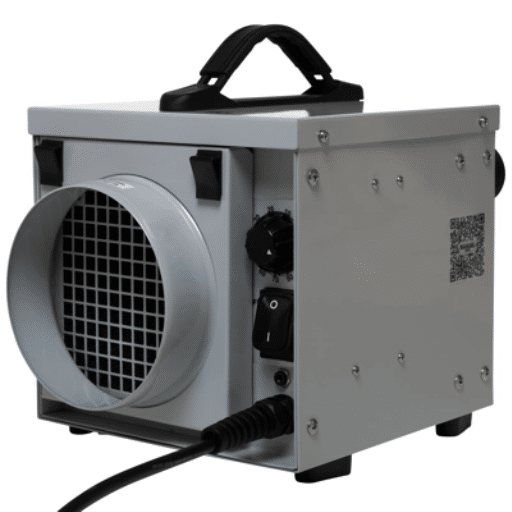
The proper installation and maintenance of ducted dehumidifiers are critical to their performance and lifespan.
How to Properly Duct a Dehumidifier
Step 1: Select Right Size & Capacity
Choose a dehumidifier of the right size and capacity from the manufacturer for the space it will serve.
Step 2: Plan Duct Layout
Ensure straight, clear course for airflow with no unnecessary bends or long stretches of ducting.
Step 3: Use Insulated Ducts
Apply insulated ducts in regions where temperature variations can lead to condensation accumulation.
Step 4: Secure Connections
Use duct fittings and tape to securely connect ducting, ensuring airtight connections to prevent air leaks.
Step 5: Position Intake & Output
Place air intake in areas with most moisture; output in obstruction-free spots for processed air.
Step 6: Install Vent Caps/Grilles
Use compatible vent caps or grilles to maintain efficient airflow without affecting aesthetics.
Step 7: Regular Inspection
Inspect ductwork regularly to correct any blockage, damage, or leak for maintained performance.
💡 Pro Tip: Getting help from a professional HVAC technician can provide insights specific to your case, ensuring your dehumidifier operates at highest efficiency.
Essential Maintenance Tips for Longevity
🔄 Clean or Replace the Air Filter Regularly
The air filter works as a barrier against dust, allergens, and other particles, protecting the system from clogging. Monthly cleaning is the minimum recommended, with replacement due when damaged or very dirty. A clean airfilter enhances airflow and improves system efficiency.
💧 Check and Empty the Water Collection Tank
Check the water collection tank regularly to avoid it getting full. Empty daily or as needed to prevent spills and ensure efficient operation. A hose can be set up for continuous drain if your unit has that feature.
❄️ Inspect the Coils for Dirt or Frost Build-Up
Dirty or frosted coils can reduce unit performance and risk damage. Use a coil cleaner gently with a soft brush or vacuum, and maintain proper room temperature to avoid frost formation.
🏠 Keep the Dehumidifier in a Clean, Dry Area
Store in a properly ventilated place away from dust, direct sunlight, and excessive heat sources as these conditions can cause overheating and inefficient operation.
🔧 Perform an Annual Professional Inspection
Call an HVAC technician for annual service. They can find and fix problems such as leaking refrigerant, worn-out motor, or electrical faults, securing long-term top condition of your dehumidifier.
Common Issues and Troubleshooting
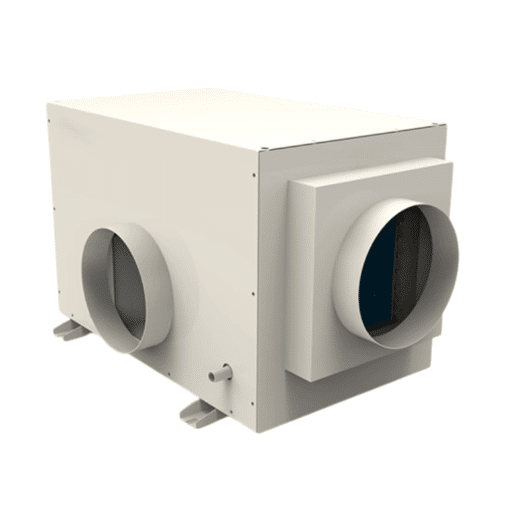
Controlling Humidity and Improving Air Quality
📊 Ideal Indoor Humidity Levels
According to experts, indoor humidity of 30% to 50% should be maintained for the best air quality.
Measure moisture content with a hygrometer, and adjust with a dehumidifier or humidifier as necessary. Regular HVAC maintenance, air purifiers, and proper ventilation significantly improve indoor air quality.
Impact of Humidity on Allergens and Dust Mites
| Humidity Level | Impact |
|---|---|
| Above 50% | Dust mites and mold thrive. Allergenic agents similar to pollen found in greater numbers. Creates favorable conditions for allergens. |
| 30% – 50% (Ideal) | Allergens kept at minimum, dust mites not a problem. Overall health and comfort of occupants maintained. “Free-flowing” environment. |
| Below 30% | Causes respiratory and skin irritation. May lead to allergy problems. Dry air creates discomfort. |
🏡 Creating a Healthy Environment with Ductable Solutions
Indoor humidity levels maintained at the right level not only help winterize the house but also control allergens and dust mites. Recent studies show that maintaining humidity between 30-50% is deemed by experts to be optimal where allergens are kept at minimum, dust mites are not a problem, and overall health and comfort of occupants are maintained.
Energy Efficiency and the Energy Star Rating
In the contest between home appliances and building systems, energy efficiency is inevitably a critical factor nowadays as demand for smarter solutions escalated by rising energy costs and environmental issues.
⭐ What Does Energy Star Mean?
The Energy Star rating, a program by the U.S. Environmental Protection Agency (EPA), serves as a dependable signal of energy efficiency. Products with this label have been tested and found to use less power than regular ones, hence generating lower electricity bills.
💰 Benefits for Dehumidifiers
An Energy Star Certified dehumidifier runs at its best while using less power, making it both eco-friendly and money-saving. This provides one way to identify efficient products and helps consumers make informed decisions.
💡 Recent information shows that queries about “What does the Energy Star rating mean?” are increasingly becoming a common concern among buyers seeking to reduce energy costs and environmental impact.
Choosing the Right Size and Capacity
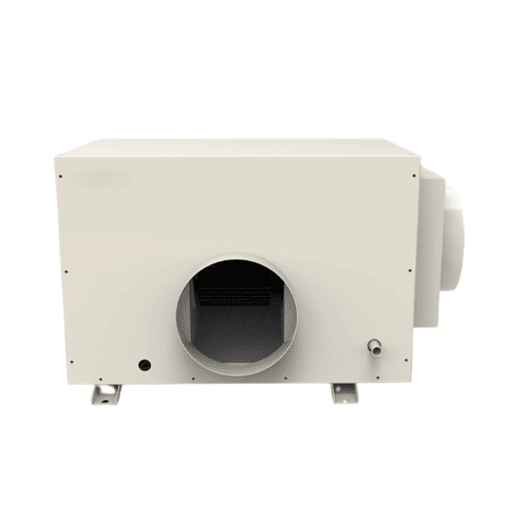
The very first thing that you must do in selecting a dehumidifier is to determine the right size and capacity according to your needs. The dehumidifier size is directly related to the square footage of the room and also depends on the moisture content.
Understanding Pint Capacity for Your Home
| Room Size | Humidity Level | Recommended Capacity |
|---|---|---|
| Up to 500 sq ft | Low Humidity | 20-30 pints/day |
| 500-1000 sq ft | Medium Humidity | 40-50 pints/day |
| Large Room/Basement | High Humidity | 60-70+ pints/day |
⚠️ Important: Don’t Oversize!
Though one may think that a large unit could be an efficient remedy, an oversized dehumidifier causes frequent on-off cycling that reduces overall efficiency and doesn’t tackle the humidity problem effectively. Select unit size according to room size and particular conditions.
Factors to Consider When Selecting a Whole House Dehumidifier
1️⃣ Size and Capacity
Capacity usually expressed in pints of moisture removed per day. Small to medium houses: 30-50 pints. Larger houses or high humidity areas: 70+ pints.
2️⃣ Energy Efficiency
Energy Star certification ensures efficient operation, consuming less electricity and providing savings in utility bills over long periods.
3️⃣ Installation Style
Portable, duct-mounted, or standalone. Ducted systems integrate with HVAC for seamless operation; standalone units offer flexibility.
4️⃣ Drainage Options
Modern dehumidifiers with built-in pumps or gravity drains eliminate need to empty water tanks manually. Crucial for consistent performance.
5️⃣ Smart Features & Controls
Wi-Fi connection, digital display, programmable settings provide better control. Monitor and adjust humidity levels remotely via smartphone app.
6️⃣ Noise Level
Choose units with quiet operation, especially if installed near living areas. Silent operation essential for comfort.
Recommendations for Different Home Sizes
🏠 Small Homes/Apartments (Up to 1,500 sq ft)
Recommended: 20-30 pints/day. These products are small in size, consume less power, and are movable from one room to another without hassle. Best choice for drying up air in particular areas.
🏡 Medium Homes (1,500 – 3,000 sq ft)
Recommended: 30-50 pints/day. Performance is much sturdier, helping keep humidity under control in cluster of rooms or larger open areas.
🏰 Large Homes (Over 3,000 sq ft)
Recommended: 50-75+ pints/day. Whole-house type dehumidifiers installed as part of HVAC system providing uniformity of humidity throughout. Features like auto-drain and energy efficiency increasingly popular.
📌 Note: Local weather conditions and areas more likely to have moisture, like basements, should be taken into account when selecting a dehumidifier appropriate for house size.
References
-
University of Central Florida: Energy and Latent Performance Impacts from Four Different Common Ducted Dehumidifier Configurations
This study evaluates the energy and performance impacts of various ducted dehumidifier configurations. -
Florida Building Commission: Further Investigation of Energy and Performance Impacts of Whole-House Dehumidifier Duct Configurations
A detailed report on the energy and performance impacts of whole-house ducted dehumidifiers.
Frequently Asked Questions (FAQ)
What does a ducted dehumidifier mean?
The ducted dehumidifier is a whole-house device that removes moisture from the air in the entire house. It is connected to an air conditioning system through ducts, and the air is circulated through ducts, which makes it possible to control moisture in all rooms reliably. This system will certainly come in handy in large spaces, as it will maintain the same humidity levels throughout the house and improve the overall quality and comfort of the air.
In what way does a ducted dehumidifier operate?
A ducted dehumidifier unit pulls in air from inside the house and passes it over the moisture-absorbing element. The air is then dried and returned to the house through ducting. The moisture removal process is continuous and helps limit the relative humidity (RH) levels in your home to the desired level, thereby preventing damp conditions and cutting down on the chances of mold and unpleasant odors.
What advantages can be derived from a whole-home dehumidifier?
A whole-home dehumidifier will provide you with a lot of advantages, such as cleaner air, greater comfort, and lower energy bills. It will also create a living environment that is free of allergens and irritants, thereby making it healthier for the inhabitants in the house.
Is it possible to use a ducted dehumidifier in crawlspaces?
Moisture can be drawn out quickly in crawlspaces if a ducted dehumidifier is used. If the unit is connected to a drain hose or a pump and drain hose is used, moisture can be removed quickly thus solving problems such as mold growth and wood rot in these up to now neglected areas.
What would be the ideal ducted dehumidifier size for my home?
The ducted dehumidifier capacity you need will be determined by the square footage of your house and the humidity level in the house. A unit which is specified to remove a certain number of pints of water daily will normally be adequate and you have the alternative of 50 pint, 70 pint or even larger capacities for heavy damp conditions.
Are there any energy-efficient ducted dehumidifier options available?
There is an extensive range of ducted dehumidifiers that are designed considering energy efficiency and they usually have the Energy Star rating. One such model is the Aprilaire E100, which utilizes great energy-efficient methods for both powerful moisture removal and lower energy consumption, thus resulting in savings while your home’s humidity is being controlled effectively.
How should I keep up my ducted dehumidifier?
When you maintain your ducted dehumidifier, it is important to do it so the unit will work at its best. Check and clean the filters regularly, make sure the drain hose is not blocked, and look for any signs of wear or damage to the unit. Also, don’t forget to schedule a professional maintenance service for your dehumidifier as it will be integrated into the HVAC system.
What are the contrasts between a commercial dehumidifier and a ducted dehumidifier?
A commercial dehumidifier has a high capacity and is usually meant for larger applications like warehouses or industrial spaces. In contrast, a ducted dehumidifier meant for residential use will be hooked up to the house’s existing heating and cooling system. Both types of devices can take the moisture out but they are not suitable for the same environments and needs.
Will I be able to install a ducted dehumidifier on my own?
The installation of a ducted dehumidifier is a do-it-yourself project that can be done, but it is always best to call in a professional. This is particularly the case when it comes connecting the dehumidifier to an existing HVAC system. The installer will make sure that everything is done right and that there will be no problems with moisture control and airflow.

